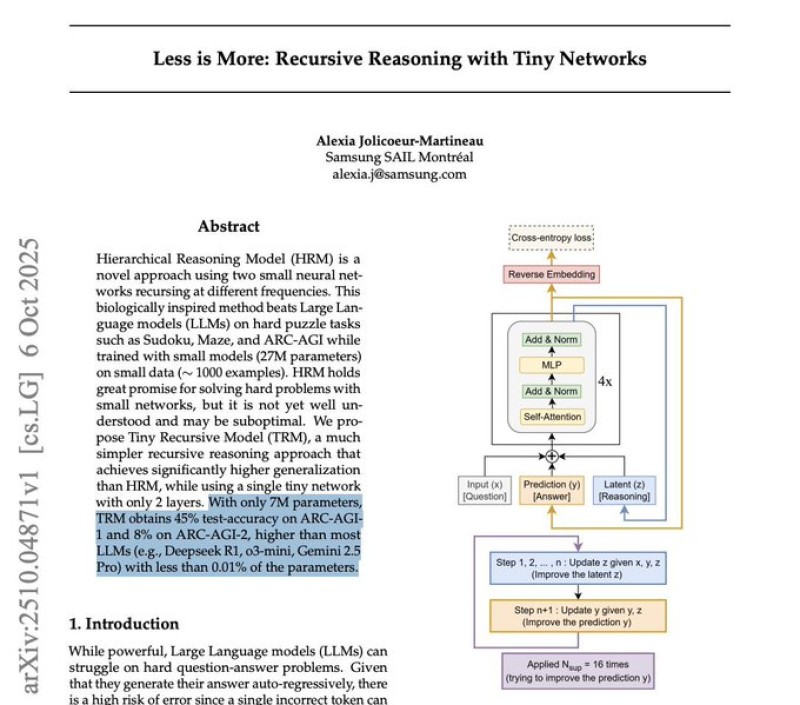Samsung SAIL Montréal researchers have developed a remarkably small neural network that challenges conventional wisdom about AI performance. Their 7-million-parameter model achieves superior results on reasoning benchmarks compared to industry giants like DeepSeek-R1, Gemini 2.5 Pro, and o3-mini, despite being thousands of times smaller.
A Surprising Breakthrough in AI
Trader VraserX recently highlighted this development, noting how the compact model defied expectations by beating much larger language models on ARC-AGI reasoning tasks.

The research, detailed in Alexia Jolicoeur-Martineau's paper "Less is More: Recursive Reasoning with Tiny Networks," takes a fundamentally different approach than the industry's prevailing "bigger is better" mentality. Rather than adding billions of parameters, the team focused on enabling more thoughtful, iterative reasoning processes.
How Tiny Recursive Model Works
The Tiny Recursive Model (TRM) architecture relies on just two neural network layers but compensates through recursive inference. It achieves 45% accuracy on ARC-AGI-1 and 8% on the more challenging ARC-AGI-2 benchmark, outperforming many models that are 10,000 times larger. The system works by generating an initial answer, then critiquing and refining its own output through up to 16 iterations. This approach mirrors human problem-solving, where reflection and correction often prove more valuable than raw computational power.
Why This Matters
ARC-AGI stands apart from typical AI benchmarks because it tests genuine reasoning ability rather than pattern recognition or memorization. Strong performance with such minimal resources opens several practical possibilities. The model's compact size makes it feasible for on-device deployment on laptops or smartphones, keeping data processing local and private. Operating costs drop dramatically when you need a fraction of the hardware and energy required by billion-parameter systems. Perhaps most significantly, this work suggests the field may be reaching an inflection point where architectural innovation matters more than simply adding parameters.
 Peter Smith
Peter Smith

 Peter Smith
Peter Smith


